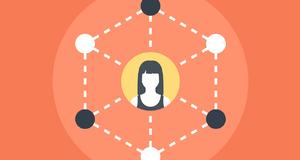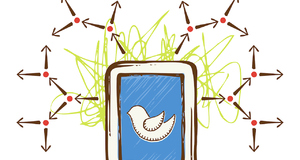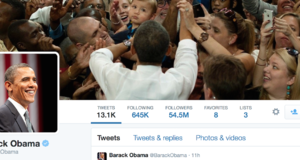From Elon Journal of Undergraduate Research in Communications VOL. 3 NO. 2The Invisible Become Visible: An Analysis of How People Experiencing Homelessness Use Social MediaIII. MethodologyThere is no single homeless community because many factors contribute to homelessness. The U.S. Department of Housing and Urban Development classifies a person as homeless if that person lacks a fixed, regular and adequate nighttime residence. A person is also considered homeless if his or her primary nighttime residence is: 1) a shelter that provides temporary living accommodations; 2) an organization that provides residence to individuals who need to be institutionalized; or 3) a place that is not designed for sleeping ("Federal definition," 2011). Despite this definition, it remains difficult to obtain a complete picture of the homeless population. The 2011 annual point-in-time count discovered about 13,000 people as homeless on any given night in North Carolina ("State totals," 2011). In the central North Carolina city examined in this study, more than 1,000 people experience homelessness on any given night. Many of these people have found help at The Center, which is a day shelter in the downtown portion of the city that provides resources for people experiencing homelessness. Every month, more than 180 "intakes," or new people who have never been to The Center before, use the services provided by the day shelter, which is open from 8:00 a.m. to 3:00 p.m. These services include case management, mental health screenings, spiritual empowerment classes, job skills classes, and support groups. In addition, a computer lab with 15 computers provides clients with the opportunity to browse the Internet, check e-mail, apply for jobs, and use social media. This research study was conducted through 15 interviews with clients at The Center (see Appendix A for interviewees). These interviews were advertised through fliers for one week in The Center's common room and computer lab. The interviews were also announced at the daily morning meeting at The Center so guests at the shelter would be aware they could participate in an interview on that particular day. Over the course of two days, the author spent eight hours at The Center and asked participants four main questions about how they interacted with social media and how they learned to use these media outlets (see Appendix B for questions). Each session lasted 15 minutes in a small, quiet conference room at The Center. The clients' involvement was voluntary, so they could withdraw from the interview at any time. In addition, each participant signed a consent form and was informed that their words may appear in a widely circulated research paper. Finally, participants were not paid for their time. After the interviews were completed, the researcher analyzed the data to look for trends in their responses. IV. FindingsThis research found that people experiencing homelessness in this central North Carolina city mainly use Facebook. Respondents are engaged with this social media tool for three main reasons: 1) to remain connected with family and friends; 2) to find support; and 3) to share ideas in a safe space. These same respondents were hesitant to use Twitter because they did not want to update others about every moment of their lives. No respondents had LinkedIn accounts or maintained blogs. The age of respondents ranged from 25 to 55 years old, with the average age being 36 years old. The amount of time respondents spent on the computer ranged from 1 to 10 hours per day. The average amountof time spent on a computer was four hours per day. Respondents gained computer access at The Center and local libraries. No respondent owned a personal computer, but if they did, they said they would spend more time on the Internet. For example, Respondent #2 said he was on the computer and Internet more often before his laptop was stolen. Thirteen respondents had Facebook accounts that were used on a regular basis. The amount of time spent on Facebook ranged from five minutes to four hours per day. Most respondents spent about one hour per day on Facebook and had been active on their Facebook accounts for a wide variety of times, ranging from one to six years. Almost a half of respondents had their Facebook accounts for only one year. Staying Connected: Overall, those with an account said they use Facebook to stay connected. People experiencing homelessness easily lose contact with their family and friends. Respondent #14 said, "It's a lonely life when you don't have people in your immediate atmosphere that want to talk about things that are important to you." Facebook is a free and easy way that people experiencing homelessness can remain connected to their support networks. These connections are maintained through the "little things" people can do on Facebook. Respondent #11 appreciated that Facebook reminds him about people's birthdays so he can send his friends celebratory messages. His ability to share this joy in a free way helped Respondent #11 feel like he can remain a part of the community despite his lack of economic resources. In addition, three respondents emphasized that they like commenting on people's photos. Doing this helped the respondents remain updated about people's lives and made them feel more connected to their friends and family. People experiencing homelessness also use Facebook to stay connected with the community by researching details about local events and by searching for jobs. Three respondents specifically mentioned they used Facebook to gather details about community events, such as meals, parties, and cultural events. Another three respondents used Facebook as a networking tool to locate jobs. For example, Respondent #9 thought Facebook was beneficial because it allows people to "network, advertise, and connect with the world." In conclusion, people experiencing homelessness use Facebook to remain connected with their family, friends, and community. They strengthen this sense of connectedness by accepting friend requests, sharing celebratory messages, commenting on people's photos, obtaining details about local events, and by locating jobs. Support: In addition to serving as a connection tool, Facebook provides people experiencing homelessness with a sense of support. Respondent #14 said the support he gained from his family and friends on Facebook helped him overcome many challenges. In addition to receiving personal messages from friends, five respondents specifically mentioned they joined Facebook groups that matched their personal and professional interests, such as animal advocacy or faith-based groups. Being a member of these groups made the respondents feel like their ideas are validated and accepted, regardless of their homeless condition. Respondent #15 said he likes Facebook groups because they helped him find "my kind of people." Respondent #7,a minister, said he used Facebook to join religious groups to share his ideas and help people discover "the truth." Therefore, Facebook groups help people experiencing homelessness meet online friends that share similar interests. Establishing these connections provides members of this population with the sense of support they need from the community. Safe Environment: The third and final theme that emerged from this research is that Facebook isa safe space for people experiencing homelessness to share their ideas. Respondent #6 said that because users must accept a "friend request" in order for someone to view their profile, Facebook provides a relaxing and safe environment for people to share their ideas. "No one can get in unless they're invited," Respondent #6 said. Therefore, Facebook provides privacy and a space where people experiencing homelessness are in control of how they are perceived by other people. Other Social Networking SitesTwitter: People experiencing homelessness perceived Twitter as a way to provide others withminute-by-minute updates about a person's day. Therefore, they are often reluctant to create Twitter accounts. "I don't think that anyone is very interested in what I am doing at every moment of the day," Respondent #10 said with a smile on his face. Respondent #14 even said he is "afraid" of Twitter because he thinks it is a "confirmation of what our self-deluded society is becoming." No respondents mentioned following service providers or news organizations on Twitter. Only Respondent #6 had a Twitter account, but he did not know how to use it. When asked why he signed up for this account, he laughed and said, "I don't really know. It just felt like the right thing to do." LinkedIn: People experiencing homelessness perceive the main benefit of LinkedIn to be networking with professionals in the community. However, no respondents had LinkedIn accounts. Most respondents were interested in this social media tool, but they did not know how to create an account or how to use LinkedIn's website. Blogs: No respondents had blogs because they thought others did not want to read what they wrote. Respondent #6 was interested in putting his poetry and artwork on a blog, but he did not have the necessary computer skills to do this. Other Findings: Only two respondents did not have Facebook accounts. Respondent #1, a woman in her mid-50s, did not have enough confidence in her computer skills to use Facebook, even though her daughter encouraged her to do so. Likewise, Respondent #4, a woman in her mid-40s, did not know how to use a computer. This finding illustrates that there is a large gap in computer skill levels among members ofthe homeless population, which supports Le Dantec's research on the digital divide within the homeless community. It is also important to note that Respondent #10 specifically mentioned that he is interested in using Foursquare because he thinks this website has a stronger community focus than Twitter or Facebook.Continued on Next Page » Suggested Reading from Inquiries Journal
Inquiries Journal provides undergraduate and graduate students around the world a platform for the wide dissemination of academic work over a range of core disciplines. Representing the work of students from hundreds of institutions around the globe, Inquiries Journal's large database of academic articles is completely free. Learn more | Blog | Submit Latest in Business & Communications |



















